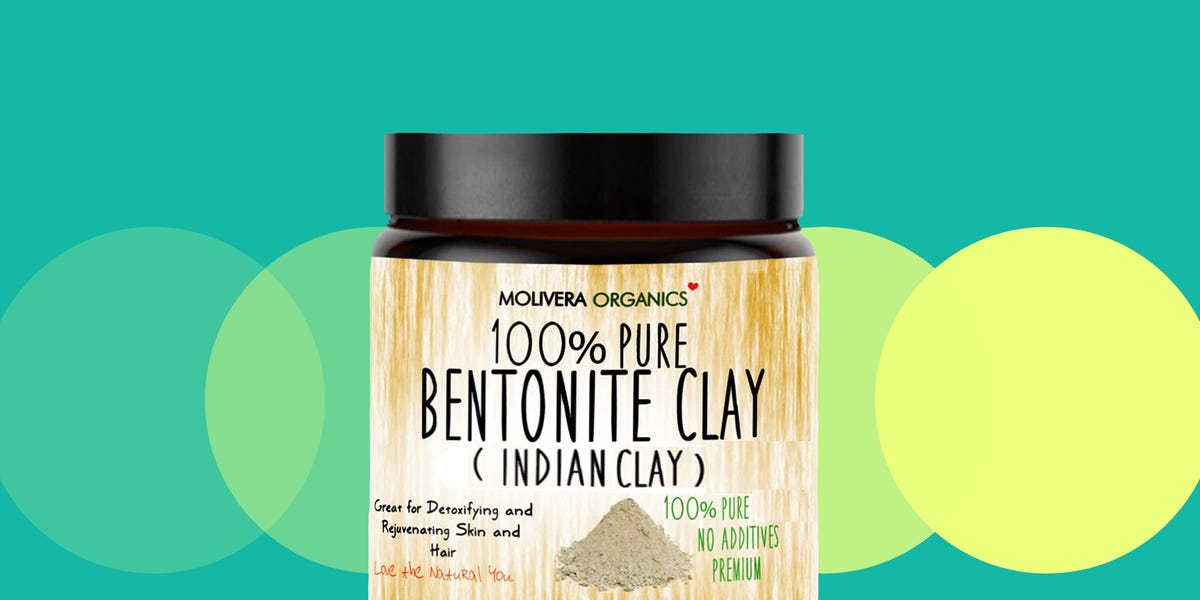
WHY BENTONITE CLAY IS ONE OF THE BEST CLEAR-SKIN SOLUTIONS OUT THERE
If you have an at-home skincare routine for acne, you're probably familiar with the benefits of clay as an ingredient. It's commonly used as a primary ingredient in face masks for acne-prone skin, and one in particular is gaining traction with dermatologists: bentonite clay. "This is a powder derived from volcanic ash and used in a lot of purifying and acne-clearing products thanks to its ability remove impurities and excess oil, according to Marnie Nussbaum, MD, a dermatologist based in New York.
But, it’s also trending because people are using bentonite clay on its own as a DIY face mask or facial cleanser (FYI, you can typically get an entire pound of the stuff for under $20).
Meet Our Experts: Marnie Nussbaum, MD is a dermatologist based in New York. Joshua Zeichner, MD is the director of cosmetic and clinical research in dermatology at Mount Sinai Hospital in New York.
Intrigued? Keep reading for everything you need to know about this wonder ingredient.
What are the benefits of using bentonite clay on skin?
"Bentonite clay is great for people with oily or acne-prone skin," says Joshua Zeichner, MD, director of cosmetic and clinical research in dermatology at Mount Sinai Hospital in New York. Here's what it can do for you:
- Absorbs impurities. When the ingredient comes in contact with pore-clogging dirt and oil, it absorbs both and releases its vitamins and minerals for the body to use. “As a result, it’s an effective ingredient for preventing clogged pores,” explains Dr. Nussbaum.
- Acts as a barrier. Bentonite clay blocks your skin from possible irritants.
- Brightens a complexion. With minerals like magnesium, iron, sodium, calcium and silica, bentonite clay helps adds radiance to skin.
- Soothes allergic reactions. On top of that, if you’re facing poison ivy, poison oak, or diaper rash, bentonite clay can diminish the effects of an allergic reaction.
- Helps your SPF work better. “Bentonite clay also helps skincare formulas optimize water resistance and skin adherence, as demonstrated in sunscreen products,” says Dr. Nussbaum. Noted!
How should I use bentonite clay?
If you're thinking of purchasing the powder itself, you should know that it can come in a massive jug. Here's how to use it:
- Mix with H2O. “When mixed with water, bentonite powder turns into a clay paste,” explains Dr. Nussbaum.The amount of water you use depends on how thick you'd like the formula to be on your skin. Play around and see what you might like!
- Apply directly to your face. You can use your face or a brush if you want to keep your hands clean.
- Leave on for 10-15 minutes. This allows the ingredient to do its job removing impurities.
- Rinse. Lukewarm water is best.
You can also choose a pre-made face mask option (see below). Dr. Zeichner recommends leaving it on for at least 10 minutes before rinsing with water or a wash cloth, similar to how you would use the powder.
How often should I use bentonite clay?
Since bentonite clay helps absorb excess sebum, people with oily and acne-prone skin types can use the ingredient almost every day, says Dr. Nussbaum. However, if you’ve got dry-ish or sensitive skin, keep your uses to a minimum (once or twice per week, tops).
“I recommend starting with a bentonite clay mask once per week,” says Dr. Nussbaum. You can change up how much powder you use in the formula depending on how well your skin tolerates the product, then use it as often or as little as you please.
Does bentonite clay cause any major side effects?
The most commonly reported issue with bentonite clay is that it can be pretty drying, so don't overuse! Sometimes bentonite clay is combined with salicylic acid if you're using it in product-form. This combination of ingredients can be particularly moisture-sucking, so make sure you read all the labels before you buy.
Other than drying out skin, there aren’t many downsides to using bentonite clay. “However, as with any ingredient, you may have an allergic or irritant contact dermatitis,” Dr. Nussbaum explains. “Therefore, do a patch test before you incorporate it into your beauty regimen.”
Bottom line: Be as cautious with bentonite clay as you would when trying any new product on your face.
2024-09-13T19:25:33Z dg43tfdfdgfd